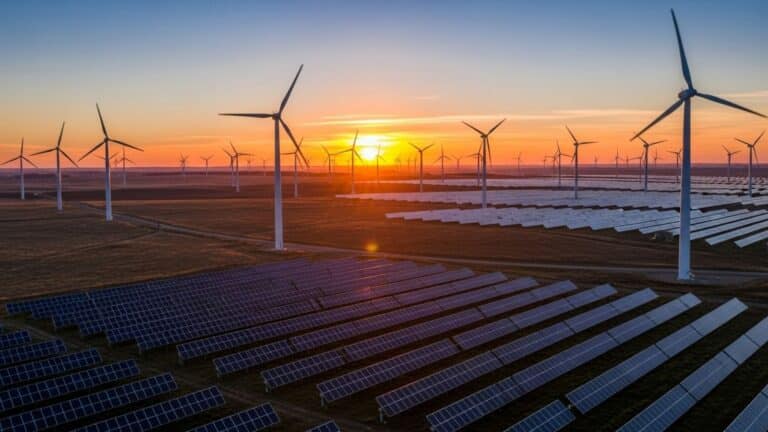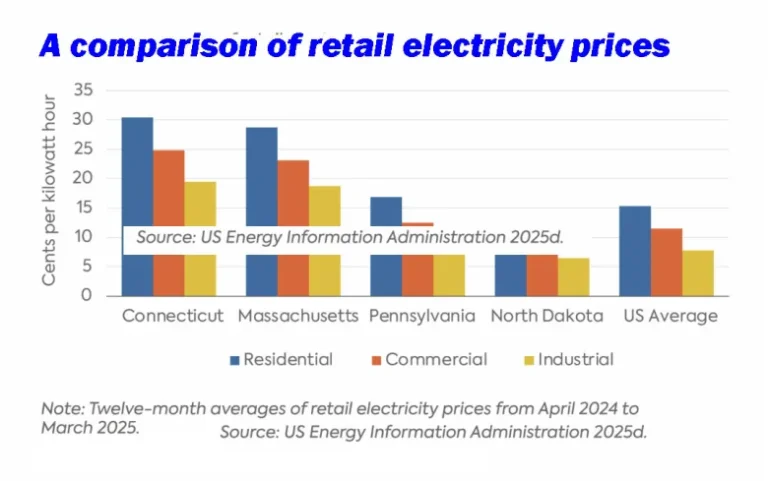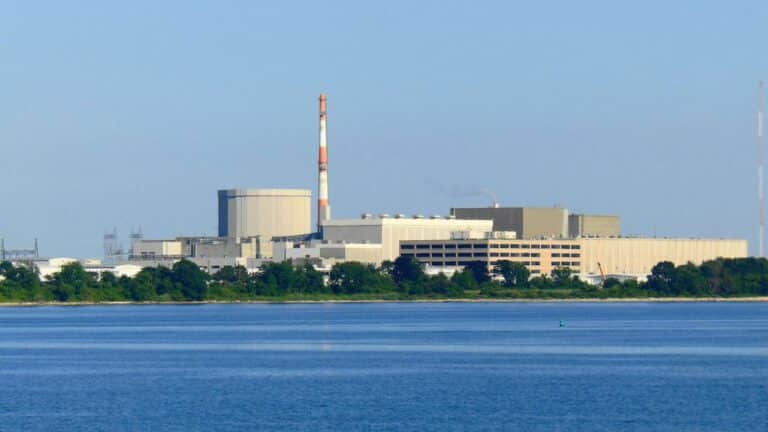Former chairwoman of Citgo Petroleum on Venezuelan oil
Luisa Palacios, the former chairwoman of Citgo Petroleum, discussed what guarantees oil companies need before making big investments.
Current Access Level “I” – ID Only: CUID holders, alumni, and approved guests only
Commentary by Kaushik Deb & Pranati Chestha Kohli • December 08, 2022
This commentary represents the research and views of the author. It does not necessarily represent the views of the Center on Global Energy Policy. The piece may be subject to further revision. Contributions to SIPA for the benefit of CGEP are general use gifts, which gives the Center discretion in how it allocates these funds. More information is available at https://energypolicy.columbia.edu/about/partners. Rare cases of sponsored projects are clearly indicated.
With the world’s second-largest population of 1.4 billion[1] and the fifth largest economy with an annual gross domestic product (GDP) of $3.1 trillion[2] in 2022, India is also ranked third globally in terms of carbon emissions. In 2021, the country emitted 2.7 billion metric tons of CO2 or 7 percent of the global total.[3] India is set to become the world’s most populous country within the next decade and is forecast to become the second-largest economy by 2050.[4] As a result, India’s energy consumption is projected to grow about 1.5 times faster than the global average over the next three decades.[5] The policy choices India makes and the targets it sets to reduce greenhouse gas (GHG) emissions are crucial to the world achieving the goal of 1.5°C pathway and not exceeding its carbon budget.[6]
India ratified the Paris Agreement in 2016, aimed at limiting global warming to well below 2°C compared to preindustrial levels.[7] Last year, it substantially augmented its mitigation commitments in its national statement at the 26th Conference of the Parties to the United Nations Climate Change Conference (COP26) in Glasgow. More recently, at COP27 in Sharm El Sheikh, India formally stated its net-zero goal by 2070 that it had announced in Glasgow.
Since 2016, India has come forward with commitments and strategies to mitigate its GHG emissions and scale up clean technologies. Yet despite these efforts, the International Energy Agency (IEA) in its World Energy Outlook (WEO) forecasts that India’s share of global CO2 emissions will rise from 7 percent in 2021 to 10 percent in 2030.[8] This commentary discusses India’s increasing climate commitments, its achievements so far, and the challenges ahead. In particular, it explores the increasingly ambitious targets laid out in India’s Nationally Determined Contributions (NDC) and assesses the country’s progress toward meeting these pledges.
As a signatory to the Paris Agreement, India submitted its first NDC in 2016 that included a number of qualitative and quantitative elements.[9]
India has made significant progress in meeting its NDC commitments since 2016 (Table 1). In pursuit of the emissions intensity of GDP target, India had already reduced its emissions intensity (not including agriculture) by 24 percent in 2016 compared to 2005.[10] India’s GDP in terms of purchasing power parity (PPP) grew by 8 percent per annum during that same period,[11] while emissions from energy use rose by 5 percent per annum.[12] Based on this, the authors estimate that India’s emissions intensity in 2021 was already 34 percent lower than 2005 levels, achieving the emissions intensity target nine years ahead of the deadline of 2030.
India has simultaneously made progress on ramping up nonfossil electricity generation. In October 2016 (the date of the NDC submission), nonfossil generation capacity accounted for 31 percent or 94.48 gigawatts (GW) of total generation capacity, and solar just 8.51 GW.[13] While India fell just short of meeting the target of 175 GW of renewable electricity capacity, the ramp up in capacity since 2016 has been nevertheless impressive. As of September 2022, India’s installed renewable electricity generation capacity (including hydro) was 165 GW, accounting for 40 percent of the total electricity generation capacity in the country (Figure 1). The highest share of this came from solar (37 percent), followed by hydro (28 percent) and wind (25 percent). Only China and the United States have increased renewable electricity capacity faster than India over the past decade.[14]
India’s solar electricity generation capacity has grown to 60.8 GW, an increase of nearly 9 GW per annum since 2016, or the equivalent of adding almost all of Africa’s existing solar generation capacity every year. The country also has 6.78 GW of nuclear energy–based electricity capacity, bringing its total nonfossil electricity generation capacity to 42 percent of the total electricity generation mix, which itself has grown by an average of 12.8 GW annually since 2016.
Growth in electricity generation from nonfossil electricity sources has been somewhat slower than capacity addition. While total nonfossil capacity grew by 11 percent per annum between 2016 and 2021, generation from these electricity sources grew by 9 percent. Excluding nuclear-based electricity from this total, renewables themselves grew by 11 percent during this period even as generation from renewable sources increased by 10 percent.
The country also reported adding forest sequestration capacity of 2.14 million metric tons of CO2 equivalent during 2013–2019.[15] This was on the back of a reported sequestration of 331 million metric tons of CO2 in 2016, which itself was a 40 percent increase from 2000 to 2016. However, the accretion since 2016 has not been reported.
India formally stated the goal of net zero by 2070 in the 2022 NDC, a commitment first made in Glasgow last year. In its national statement at COP26 in 2021, India substantially augmented its mitigation commitments and came forward with the Panchamrita (“the five nectars for immortality” in Sanskrit) strategy with the following five-point foci:[16]
India formalized elements of the previous year’s national statement in its updated 2022 NDC.[17] The updated targets address the following two items from the COP26 statement:
In this revision, India also reiterated its target to create an additional carbon sink of 2.5–3 billion metric tons of CO2 equivalent by 2030.
Soon thereafter at COP27, India released the “Long-Term Low Emissions Growth Strategy” document that reiterates all of these commitments.[18] The document also includes a number of other initiatives currently underway that seek to further reduce India’s carbon footprint while also outlining an underlying rationale for its approach. This “Mission LiFE” is rooted in more efficient use of natural resources “through sustainable lifestyles that optimize resource use and minimize waste.”[19]
India has made substantial progress toward meeting pledges made in its first NDC announcement in 2016 while also increasing its climate ambition. This section assesses the challenges ahead in meeting the enhanced commitments in three areas, namely carbon intensity improvements, acceleration of clean electricity, and net-zero targets.
In terms of emissions intensity reduction, India is well on its way to meeting the target of 45 percent reduction from 2005 levels. The authors estimate that the country’s emission intensity in 2022 was already 34 percent lower than in 2005. If India’s GHG emissions increase at the 3 percent per annum rate, as projected in the Stated Policies Scenario in the latest WEO, and GDP growth in the 2020s continues at 8 percent per annum in PPP terms, as projected by the International Monetary Fund (IMF), India will achieve the 45 percent reduction in emissions intensity before 2025.[20]
Under the Panchamrita approach, India is also aiming for a one billion metric ton reduction in projected carbon emissions until 2030. In 2020, India’s carbon emissions were 2.44 billion metric tons, up from 2.38 in 2016.[21] A reduction in projected carbon emissions by one billion metric tons until 2030 would imply an average of 125 million metric tons of carbon emissions per annum during 2022–2030, or just under 5 percent of India’s total GHG emissions. As noteworthy as the reduction of one billion metric tons could be for India, on an annualized basis it would account for just 0.4 percent of annual global emissions.[22] Currently, China’s GHG emissions are four times that of India, and the US emits nearly twice as much as India.
Additions to generation capacity have been significant in the past six years, with nonfossil fuels accounting for 172 GW of installed electricity generation capacity in India. Meeting the target of 500 GW installed nonfossil capacity, however, will entail an addition of 328 GW over the next 8 years. This would require an increase in the annual capacity addition for nonfossil electricity generation from an average of 12.8 GW during 2016–2022 to just over 38 GW per annum for the next eight years, a nearly threefold-higher annual accretion compared even to the significant increases of the past six years. Globally, only China has ramped up nonfossil capacity at a rate faster than this, increasing by an annual average of 93 GW since 2016.[23] Fossil fuels now account for 53 percent of total electricity generation capacity in China, down from 64 percent in 2016.
This ambition to increase nonfossil electricity generation capacity is reiterated in India’s latest draft National Electricity Plan that proposes to add 458.14 GW of electricity generation capacity between 2022 and 2032, more than doubling the national capacity in the next 10 years.[24] Most of this increase is set to come from nonfossil fuels—60 percent from solar, 20 percent from wind, 8 percent from hydro, and 3 percent from nuclear—compared to just 8 percent from fossil fuels. This would raise the total renewable electricity generation capacity in the country to over 500 GW, with nonfossil fuels increasing their share to 68 percent by 2032, up from 42 percent today. This plan aligns with the 2022 NDC, even as the scale of anticipated increase remains unprecedented.
Even as India has reaffirmed its pledge, it is noteworthy that among the world’s top 20 GHG emitters, its goal of achieving net-zero emissions by 2070 is at least a decade behind other announced targets. India’s per capita income is also the smallest among this group.
As with other countries that have made similar announcements, India has not yet released details of a road map to net zero. The just-released “Long-Term Low Emissions Growth Strategy” document includes the likely elements of such a road map while reiterating the targets in the 2022 NDC.[25] The next step for the country would be to develop a detailed plan for operationalizing these commitments along with an assessment of how the impact on total emissions might add up to net zero by 2070.
The WEO projects that India’s energy consumption growth over the next three decades will be the largest globally, and its CO2 emissions from energy use will rise the most, even as emissions of other large emitters, including China, EU, Russia, and the US, start to decline.[26] Hence, increasing India’s mitigation actions are central to achieving the Paris Agreement goals. The increased ambition reflected in enhanced targets in India’s NDC aligns with this need for greater action. Success in achieving those targets is important, not just for India but for the world to stay within its carbon budget.
So far, India has done well to achieve the targets it set in the 2016 NDC. The improvement in emissions intensity has been faster than projected, and even the enhanced target in the 2022 NDC is likely to be met well in advance of the deadline. That signals the potential for more action toward reducing emissions intensity, though India has not yet indicated whether it will set more stringent targets.
India has also ramped up its nonfossil electricity generation capacity since 2016, especially of renewables led by solar. Renewables comprise a remarkable three-quarters of the increase in total electricity generation capacity since 2016, with solar accounting for more than half of the total. The new target in its 2022 NDC, however, calls for an unprecedented level of effort and increase in nonfossil capacity. The next few years will show how well India does on this metric to get closer to its net-zero goal.
[1] World Population Review, “India Population 2022 (Live),” accessed October 31, 2022, https://worldpopulationreview.com/countries/india-population.
[2] IMF, “World Economic Outlook Database: October 2022,” accessed October 31, 2022, https://www.imf.org/en/Publications/WEO/weo-database/2022/October/downlo….
[3] Global Carbon Atlas, “CO2 Emissions,” accessed November 11, 2022, http://www.globalcarbonatlas.org/en/CO2-emissions.
[4] OECD, OECD Economic Outlook, Volume 2022 Issue 1 (Paris: OECD Publishing, 2022), https://doi.org/10.1787/62d0ca31-en.
[5] IEA, “World Energy Outlook 2022,” October 2022, https://www.iea.org/reports/world-energy-outlook-2022.
[6] The official target to limit increase in global average temperature has come down from 2 to 1.5 degrees Celsius in the period since the Paris Agreement. For instance, the Glasgow Climate Pact “Reaffirms the Paris Agreement temperature goal of holding the increase in the global average temperature to well below 2 °C above pre-industrial levels and pursuing efforts to limit the temperature increase to 1.5 °C above pre-industrial levels” and “Recognizes that the impacts of climate change will be much lower at the temperature increase of 1.5 °C compared with 2 °C and resolves to pursue efforts to limit the temperature increase to 1.5 °C”(https://unfccc.int/sites/default/files/resource/cma2021_10_add1_adv.pdf). This is an acknowledgement of the scientific consensus that anything above 1.5 °C would have significantly worse consequences (https://www.ipcc.ch/sr15/).
[7] Press Information Bureau, Government of India, Ministry of Environment, Forest and Climate Change, “Cabinet Approves Ratification of the Paris Agreement,” press release, September 28, 2016, https://pib.gov.in/newsite/PrintRelease.aspx?relid=151205.
[8] Ibid.
[9] Ministry of Environment, Forest and Climate Change, Government of India, “India’s Intended Nationally Determined Contribution: Working Towards Climate Justice,” 2016, https://unfccc.int/sites/default/files/NDC/2022-06/INDIA%20INDC%20TO%20U….
[10] Ministry of Environment, Forest and Climate Change, Government of India, “India: Third Biennial Update Report to The United Nations Framework Convention on Climate Change,” 2021, https://unfccc.int/sites/default/files/resource/INDIA_%20BUR-3_20.02.202….
[11] IMF, “World Economic Outlook Database.”
[12] BP, “Statistical Review of World Energy 2021, 70th edition,” July 2021, https://www.bp.com/content/dam/bp/business-sites/en/global/corporate/pdf….
[13] Ministry of Power Central Electricity Authority, Government of India, “Power Sector Oct-2016,” https://cea.nic.in/wp-content/uploads/2020/05/exe_summary-10-10.pdf.
[14] IRENASTAT Online Data Query Tool, “Installed Renewable Electricity Capacity (MW) by Region/Country/Area, Technology and Year,” accessed November 1, 2022, https://pxweb.irena.org/pxweb/en/IRENASTAT.
[15] Ministry of Environment, Forest and Climate Change, “India: Third Biennial Update Report.”
[16] Press Information Bureau, Prime Minister’s Office, “National Statement by Prime Minister Shri Narendra Modi at COP26 Summit in Glasgow,” press release, November 1, 2021, https://pib.gov.in/PressReleseDetail.aspx?PRID=1768712.
[17] Government of India, “India’s Updated First Nationally Determined Contribution Under Paris Agreement (2021–2030),” August 2022, https://unfccc.int/sites/default/files/NDC/2022-08/India%20Updated%20Fir….
[18] Ministry of Environment, Forest and Climate Change, Government of India, “India’s Long-Term Low-Carbon Development Strategy,” 2022, https://unfccc.int/sites/default/files/resource/India_LTLEDS.pdf.
[19] Bhupendar Yadav, “National Statement by His Excellency Shri. Bhupendar Yadav, Minister of Environment, Forest and Climate Change of India,” United Nations Climate Change, November 15, 2022, https://unfccc.int/documents/623871.
[20] Estimated by the authors using BP Statistical Review of World Energy 2021.
[21] Global Carbon Atlas, “CO2 Emissions.”
[22] Ibid.
[23] China Electricity Council, “Monthly Statistics of China Power Industry,” various issues, https://english.cec.org.cn/#/newsdetails?id=1534135917169029121.
[24] Ministry of Power, Central Electricity Authority, Government of India, “National Electricity Plan (Draft) Generation Vol-I,” September 2022, https://cea.nic.in/wp-content/uploads/irp/2022/09/DRAFT_NATIONAL_ELECTRI….
[25] Ministry of Environment, Forest and Climate Change, “India’s Long-Term Low-Carbon Development Strategy.”
[26] IEA, “World Energy Outlook 2022.”
On November 6, 2025, in the lead-up to the annual UN Conference of the Parties (COP30), the Center on Global Energy Policy (CGEP) at Columbia University SIPA convened a roundtable on project-based carbon credit markets (PCCMs) in São Paulo, Brazil—a country that both hosted this year’s COP and is well-positioned to shape the next phase of global carbon markets by leveraging its experience in nature-based solutions.

Connecticut needs an honest debate, and fresh thinking, to shape a climate strategy fit for today, not 2022.


Full report
Commentary by Kaushik Deb & Pranati Chestha Kohli • December 08, 2022